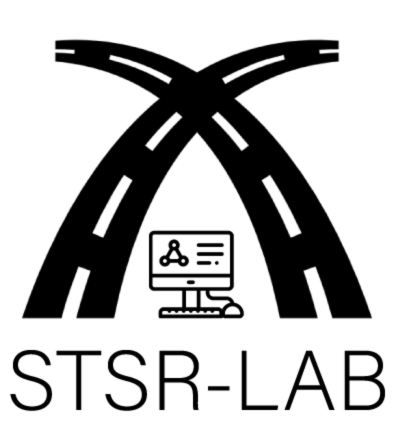Research Areas
Smart Transport Safety Research Lab is heavily involved in the following research topics
Traffic Conflict Analysis
Traffic conflict techniques (TCTs)—where vehicle, pedestrian, and bicyclist movements are measured and monitored at sites—have been scrutinized for a couple of decades, but recent and significant technological breakthroughs give rise to a research opportunity that can overcome past shortcomings of road safety management that only relied on crash outcomes. This technique has the potential to transform road safety management into proactive practice.
STSR-Lab has applied traffic conflict techniques to the following research needs:
- .Examining the relationship between conflicts and crashes
- .Evaluating road safety of transport facilities like intersections and highways
- .Examining road safety of various road users like pedestrians, cyclists, and motorcyclists
Connected and Automated Vehicles
Connected and Automated Vehicles (CAVs) are likely to revolutionize private, public and commercial mobility and represent the future of the transport system.
STSR-Lab is focused on the following key research directions on this topic:
- .Develop safety models to examine crash risks associated with CAVs
- .Investigate microscopic traffic interactions between CAVs and traditional vehicles
- .Develop effective management strategies to integrated CAVs into the transport system
- .Study travel behavior implications of CAVs
Human Factors and Driving Behavior
Over the past decades, there has been a considerable amount of research in the modeling of driving behaviors like car following, lane changing, gap acceptance, and speed selection behaviors.
To investigate the effects of human factors and driver errors on these microscopic traffic flow models, STSR-Lab is involved in the following research topics
- .The impact of mobile phone distraction on driving behavior and safety
- .Car-following and lane-changing behavior of drivers
- .Speed selection behavior and their relationship with safety
- .Driver interactions with traffic lights
- .Gap acceptance behavior of drivers
Engineering Factors in Trafiic Operation and Safety
Engineering factors like roadway geometry and traffic characteristics are not only important for efficient traffic operation but also influence road safety.
STSR-Lab research in this space includes:
- .Motorcycle safety at signalized intersections
- .Traffic safety along rural mountainous highways
- .Run-off road crashes along rural highways
Black Spot Identification Techniques
The identification of Black-spots or crash locations or locations with high risk is crucial for the efficient safety management of a transport network. Driver behavior or human factors are predominant factors in a major portion of crashes, yet these factors are routinely excluded from Safety Performance Functions (SPFs), mainly because these factors are difficult to measure and generally are not readily available. The impact of excluding behavioral factors in SPFs is that their contribution to crashes will be statistically attributed to observed, highly correlated geometric and operational factors.
STSR-Lab research on this topic include
- .Developing SPFs accommodating roadway geometric, driver behavior and spatial factors
- .Evaluating road safety of transport facilities like intersections and highways
- .Examining road safety of various road users like pedestrians, cyclists, and motorcyclists
Travel Behavior
STSR-Lab research is also focused on investigating the travel behavior of commuters. He has been involved in applying econometric modeling techniques to understand behavioral responses across travel scenarios.
Specific research topics include
- .Examining the mode choice behavior
- .The influence of land use patterns on travel behavior
- .Investigating the relationship between travel behavior factors and safety
- .Integrating safety into transport planning stages
- .Travel behavior in response to connected and automated vehicles
Driving Simulator Research
Driving simulators and Virtual Reality simulators are excellent tools for investigating the role of human factors on safety.
STSR-Lab has extensive experience in conducting driving simulator research and has successfully conducted several driving simulator experiments to understand the following critical research issues
- .Driver distraction and safety
- .Driving behavior in connected and automated vehicles (CAVs)
- .Microscopic traffic interactions like car-following, braking, and interactions with traffic lights
- .Speed selection behavior of drivers across various infrastructure settings
- .Pedestrian interactions with road traffic infrastructure and vehicles.
Econometrics and Artificial Intelligence Applications and Transport Engineer
STSR-Lab is heavily involved in developing cutting-edge Statistical and Econometric models and Artificial Intelligence techniques for transport engineering applications.
Some important models of his research are Bayesian hierarchical models, simultaneous equation models, data mining with classification and decision trees, Artificial Neural Networks, generalized estimation equations, multi-process count regression models, accelerated failure time duration models, and advanced discrete choice models like random parameters logit model and heterogeneous ordered Probit model.
These models are applied in various applications like Traffic safety around connected and automated vehicles (CAVs), Explaining microscopic traffic interactions, Examining Travel behavior of commuters, Safety Performance Functions for transport facilities.
